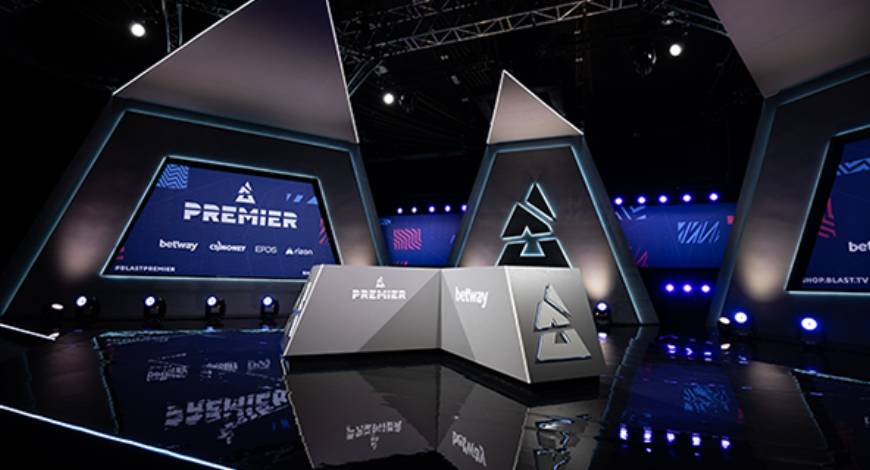Trends
Esports broadcast production optimization

Gaming has seen explosive growth over the past decade, partially due to an increased interest in esports, with the estimated esports audience expected to grow from 532 million in 2022 to 640 million in 2025.1 However, gaming broadcasters trying to adopt a traditional sports production approach may run into challenges such as large capital investment requirements, non-scalable infrastructure, and the inability to properly localize content to meet the demands of an international audience.
To overcome these challenges, broadcasters have an opportunity to optimize their production and distribution approach utilizing innovative broadcast solutions to sustain esports and gaming audience growth, improve agility and innovation, and achieve greater profitability.
Challenges of a traditional sports broadcast production in esports
With esports being in its infancy with high-growth potential and ongoing experimentation, esports broadcasters could benefit from more lean and flexible production architectures. However, many broadcasters may make the mistake of trying to force a traditional sports broadcast approach onto esports and may therefore face the following challenges:
- Large capital investment requirements: The capital required to deploy full production facilities, in potentially multiple global locations, is infeasible for many smaller and newer organizations. Even for the larger established gaming organizations, the unproven revenue models within esports broadcasts can make recapturing costs difficult.
- Non-scalable infrastructure: In a traditional model, the physical infrastructure build must meet the demand of the largest major global championship events but is then underutilized for the smaller events, amateur divisions, or regional leagues.
- Localization for global audiences: Today’s esports are unbound by geographical locations. But this creates a challenge: making the event localized to the consumer. To do this, multiple versions are required to accommodate multi-language subtitles, localized game casting, and on-screen graphics.
Evolving production architectures for live esports broadcasts
Today’s live event productions have more options in how they’re architected to address the demands of today’s (and tomorrow’s) audiences. For live esports, both the infrastructure platform and the production operations should be considered. Looking at the landscape, production engineering focuses on viability of using cloud, virtualized, or traditional methods to engineer their production technology infrastructure. Likewise, production operations consider the options of either an on-venue production model or a remote integration production model (referred to as REMI). Based on these two main dimensions, we have classified four primary production architectures: Traditional, cloud, REMI, and cloud REMI.
Selecting an optimal architecture
For an esports broadcaster to provide high-quality programming to viewers while staying within budget, there are considerations to make in choosing a production architecture. This decision will likely depend on the types and size of the events being broadcast and the desired outcomes. Here, events are classified into three tiers:
- Tier 1 events are the largest all-around events with an exceptionally large audience, complex technology execution, very high production budgets, and high revenue potential. These productions take a risk-averse approach, and thus we see very little tier 1 programming falling into the REMI and cloud models, but it is available and doable.
- Tier 2 events are medium-size with a significant audience, but less than tier 1. The complexity of the on-screen technologies may not be as complex and their production budgets are average to modest. Because of this, producers may have more leeway to embrace an in-cloud option or REMI model as it may not be feasible to be on-prem and within budget.
- Tier 3 events are classified with smaller audiences and low revenue generation. Budgets are low, which often means more will be spent on the creative than on the technology on-screen. Generally, a tier 3 production may take more risk because failure has less financial impact, but considerations should still be made for the viewer’s experience.
Additional scenarios
While we detailed the three event tiers separately, many organizations will likely broadcast a combination of events spanning the different tiers. These organizations may find it advantageous to implement cloud and REMI capabilities into their tier 1 event broadcast model, allowing them to take advantage of the agility and scalability provided to utilize excess capacity for tier 2 or 3 event broadcasts.
Additionally, startups and early adopters who may not have established traditional infrastructure may find it more viable to invest directly into cloud and REMI capabilities regardless of which tier(s) of events they broadcast.
Future shifts in production models
- As technology advances, it could become more economical and less risky for broadcasters to adopt cloud and REMI production models. The differentiators between the event tiers will likely also begin to blur. Understanding this shift, and the following drivers behind it, can help set organizations up for future success.
- Cloud production model maturity: While there’s still more improvement to be made, recent cloud advances have made it viable for more tier 1 and even more tier 2 events.
- Contribution-feed latency is improving: Requirements for “almost no latency” are now being met leveraging new compression technologies. However, while this area is improving, it’s taking longer in part because of the complexities and costs to gain this reduced latency.
- Broadcast hardware moved to IP: The shift of major broadcast technology hardware from serial digital to IP has provided advantages, one of which is leveraging the systems to support REMI production more robustly.
Conclusion
As the market for video game tournaments and esports streaming content continues to expand, the need for enhanced broadcast production capabilities becomes more important in working to ensure these events run smoothly without interruption.
Deloitte has the resources and experience to work closely with organizations to help evaluate current-state infrastructure and identify the optimal blend of cloud and REMI production models based on business needs and desired scale. With our capabilities, we can bring both strategic and technical experience to help design, test, and implement broadcast architectures. Deloitte






